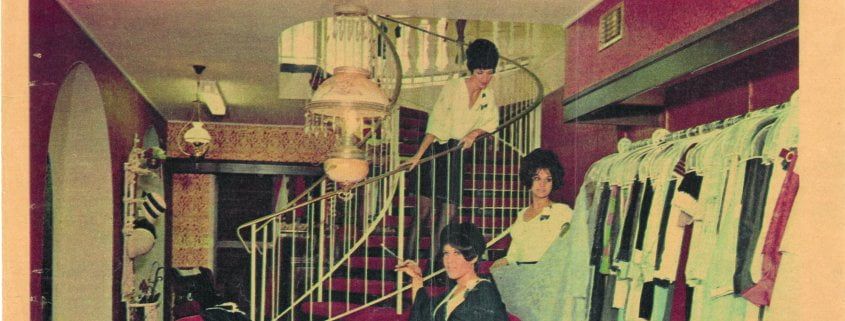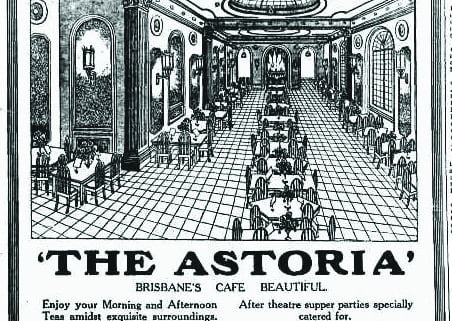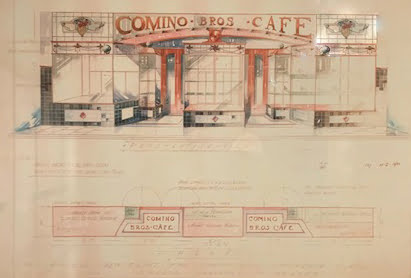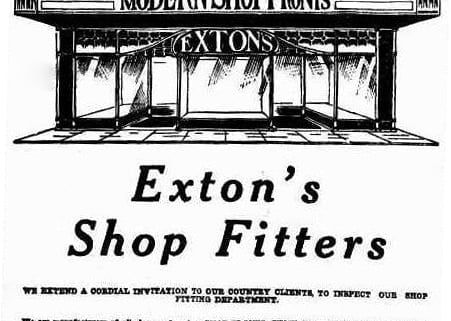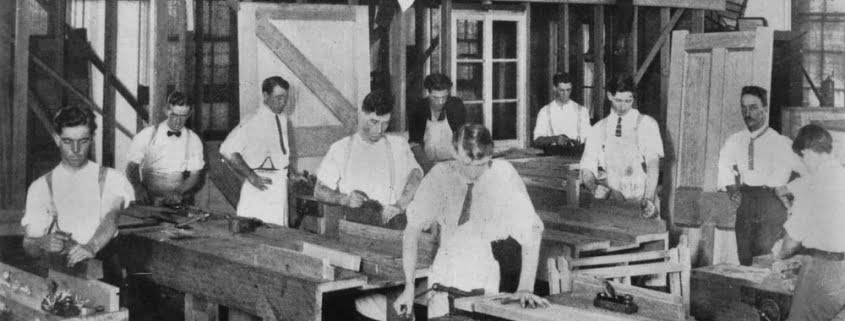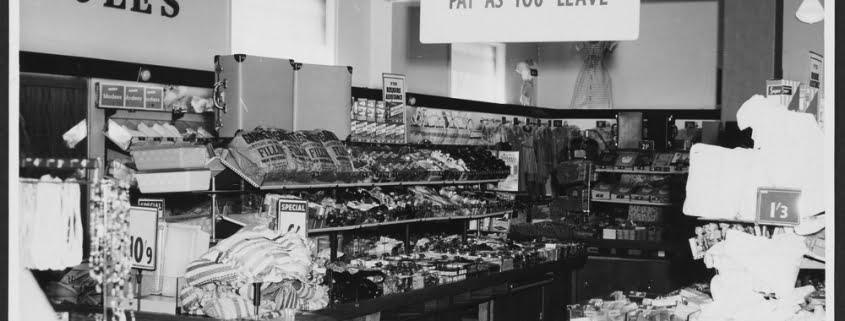This tumultuous decade, both in economic and political outcomes, was one of the most trying times for the Queensland Shopfitting Industry. It included the great 1974 Brisbane/Southeast Queensland flood that decimated retail and manufacturing business properties as well as domestic homes.
There was the election in December 1972 of the Whitlam Government into Federal Parliament, a recession, mortgage rates at 17.5%, with business lending rates higher, wages in a dramatic climbing cycle, materials costs rising daily and cost of homes doubling, as well as skilled labour shortages. In Queensland there were industrial action/strikes occurring daily and protesting university students holding marches in Brisbane City streets in agitation against the Vietnam War and the Bjelke-Petersen State Government.
Through all the turmoil, it proved to be a record decade for major shopping centre construction, with the local shopfitting sector having possibly greater workloads at that stage than for the following decades.
The following shopping centre openings took place in Brisbane during this period:
1970 – Indooroopilly Shoppingtown in the western suburbs and Garden City Shopping Centre in the southern suburbs
1971 – Brookside Shopping Centre in the north-western suburbs
1979 – Mt Ommaney Shopping Centre in the western suburbs and Carindale Shopping Centre in the eastern suburbs.
The regional shopping centre openings were as follows:
1970 – Original Nathan Plaza in Townsville, and Booval Fair
1977 – Original K-Mart Plaza, Townsville, Westridge Plaza, Kirwan Townsville
1977 – Pacific Fair Shopping Centre, Broadbeach Waters Gold Coast
1978 – Sugarland Shopping Centre, Bundaberg
1979 – Caneland Shopping Centre, Mackay, and Kawana Shopping World, Sunshine Coast.
There were also many smaller shopping centres opening in this period throughout the state.
These centres had major growth expansion works in the following years, to meet population growth and infrastructure requirements. All these centres continue to provide a great source of turnover for the shopfitting industry in the state.
Indooroopilly Shoppingtown was the first Westfield constructed centre in Queensland, so there was much trade apprehension at the time, as the local shopfitters had never been exposed to the Westfield build process. When opened, Indooroopilly Shoppingtown was promoted as being the largest shopping centre in the Southern Hemisphere. It was an awkwardly accessible 4-storey structure, built on a previously suburban housing block site. The centre had renovations and expansion upgrades in 1998, and a major expansion in 2014 with the addition of a further 120 stores and the inclusion of some international brand stores.
Being built 16km away at the same time as Indooroopilly and fitted out soon after, the Garden City Shopping Centre at Mt Gravatt was constructed by Hooker Projects and pre-sold to David Jones who opened with a 3-level David Jones Department store. It also opened with a 2-level McDonalds and East Department store, a Woolworths store and a large Brisbane City Council Library, as well as numerous specialty stores. It was managed by AMP Limited, until being purchased by Westfield in 2003.
This centre has been through seven extensions/expansions and department store relocations. The last major expansion was in 2012, and included two department stores, another supermarket and a further 100 specialty stores, making a total of 470 outlets. It has recently been embroiled in a local battle over the re-naming of the centre.
There were approximately 100 QLD shopfitting companies trading at the time of the original construction of the above two centres and the third, Brookside Shopping Centre, only a matter of six months later. No doubt, there must have been some assistance from our shopfitting comrades south of the border to achieve the completion of these centres on time.
Some of the shopfitting shelving display system manufacturers/suppliers trading at that period were:
H M Cowdroy
U-Rect-It
Kingfisher
Bevlyn Industries
Modern Merchandising
Sylvan Wire Works
Apex Displays
Keylar Shelving
A few signage companies of the time:
Albert Smith & Son Pty Ltd Signs
Victor Day Signs
Daynite Sign Industries
Neon Corporation (Aust) Ltd
Plastic Products Agencies
Regent Sheet Metal Works
Reno Plastics & Signs
Brisbane Mirror Sign Co Pty Ltd
K Cunningham
A more comprehensive list of shopfitting/sign/sheet metal companies in QLD from that period is available on request.
The local supplier of Formica and Coronite board at this time was Realhome Pty Ltd, based at Rocklea. They also produced vanity units and toilet partitions. The owners were brothers Chris and Roger Bell and were well known in the industry. Formica purchased the company from the Bell Bros. in 1977 and relocated Formica to Colebard St Archerfield. Realholme as a company remains and still manufactures toilet partitions and joinery items.
Paramount Distributors were the local supplier of Laminex products until Laminex set up a larger distribution centre in their own right. Gibbs Bright were selling board products as well as timber to our industry. Sharp Plywood were manufacturing veneered board products and DAP board. Brims were producing plywood and pressing veneer products. Austral Plywood were manufacturing plywood at their Tennyson Plant. Bretts were still producing plywood at Windsor as well as making joinery and selling hardware and timber.
A couple of small shopfitting companies to commence in Brisbane in 1971 were Parker and Turner based at Pentex St Salisbury and R J Cecil Shop & Office Fitting at Bowen Hills. Parker and Turner had been at Christie & Walker and then went to Robb & Brown. There was possibly a connection between G James Glass and Aluminium and Parker and Turner.
Robert Cecil had been Alec Hartley’s first apprentice at J A Hartley Shopfitters and his business ran until recent times.
As well as fitting out traditional outlets, a new phenomenon was emerging –one that to this day provides work for our industry – the revolution of fast-food takeaway outlets. With the arrival of some overseas entities such as Kentucky Fried Chicken, Pizza Hut, Hungry Jacks, Red Rooster, and McDonalds, came their own take on the branding of new and different fitouts to our shopping centres. Fortunately for shopfitters, most of these brand names keep renewing their images to entice a new wave of customers.
In 1972 (when little of Queensland’s History was highly valued), an iconic Brisbane landmark hotel, Lennons, was relocated from its long-standing George St address to a new high rise building at 72 Queen St, the former site of the Old Brisbane Town Hall. Local shopfitters were kept busy fitting out ground floor and lower floor specialty stores and cafes and the top floor restaurant /nightclub.
By 1973-1974 it was said that the new supermarket outlets across the country had at that stage captured 50% market share of retail trade.
In January 1974, South-East Queensland was severely inundated after a cyclone crossed the coast north of Brisbane and brought further non-stop rain, causing major flooding to towns from Gympie to the New South Wales border. As many as 14,000 homes were flooded in greater Brisbane, the Sunshine Coast, the Gold Coast canals and Ipswich. As well as the damage to homes, suburban shopping centres, Brisbane Central City shops and offices were under water. The Gold Coast was cut off from Brisbane by the Nerang River. Unfortunately, many industrial areas were also severely damaged, so before the rebuild/fitout works could commence, new machines as well as materials had to be sourced. Such was the devastation, that it took months to get industry reorganized, shopping centres back up and running and homes starting to be repaired.
In 1974, all workers under federal awards were granted four weeks paid annual leave, and in 1975, quarterly wage indexation was introduced.
In the mid-70s, a young cabinetmaker/shopfitter began in business as part owner of W R Emery at Fulcher Rd, Red Hill (on the current NRL Broncos site). His name was Les Wilson.
Les had served his apprenticeship at Crafts Furniture & City Joiners, then moved on to Wattle Products to become a leading hand at an early age. In 1978, he took total ownership of the W R Emery business and moved the business to the current location at Moorooka. At that time, he renamed his business Les Wilson Detail Cabinetmakers.
Les soon became well known and well respected for his honesty and immense knowledge of the industry, receiving most of his workload through well-known Brisbane architects. He had notable national clients such as Just Jeans, National Bank, ANZ Bank and Wendy’s Ice Cream. The business also carried out works for hotels, jewellers, fashion stores, professional suites and food outlets. Les had a close connection with McDonalds on their new outlets and the updating of their existing stores.
Over the years, Les usually had an average of 15 tradesmen and apprentices with many of his employees remaining loyal for 20-30 years. He was passionate about our industry and served on the Queensland and national IFA (then ASOFIA) committees and enjoyed attending many national conferences and being among his fellow shopfitters. He was awarded the QLD Icon of the Industry by his peers in 2009.
When considering retiring from his business, Les advertised the business for sale and – according to Les – out of the people interested in purchasing, there was one stand out applicant who he wished to sell to. That person is still the current owner, Mick McLoughlin. The business was sold to Mick in October 2003, with Les retiring 6 months later. Sadly, Les passed away in 2020. The business is now known as Bencee Fitout & Constuction.
A source of quality shopfitting works from 1975 onwards was the fitout works to international airlines and international shipping lines’ sales offices as overseas travel became more affordable and boomed as a result. It is said a million people a year were travelling from Australia then and it has continued to increase, until Covid times. Many travel companies have since opened in shopping centres and high streets. Domestically, the 2-airline system was predominant, and these airlines had outlets at larger regional towns as far north as Cairns, with fitouts that were updated from time to time.
In 1975, colour television arrived in Queensland and there was a need for specific retail outlets that only displayed the varying new cumbersome television sets. These stand-alone stores seemed to only last for a few years, as the product became mainstream in time.
Pacific Fair Shopping Centre was a new centre built on what had been swampland at Broadbeach Waters, and opened in 1977. The design layout was a far cry from the ultra-modern style of the current centre. Most of the retail outlets were external/open-air and the structures were designed to certain themes, which the shopfitters were expected to follow. There was the Olde England zone, South Pacific zone, New Orleans zone, French Quarter and Australian Colonial zones. There was also a Fisherman’s Island, Cotswold Village and an Indian Tepee Village. Altogether the concept worked and was a great drawcard for the Gold Coast tourist market as well as being well accepted by the locals.
The concept was to give shoppers a trip away each shopping day. Pacific Fair was developed by the Hooker Corporation and the Australian Guarantee Corporation and managed by AMP.
The centre has had numerous expansions over the years with a major 2014 overhaul to give it a modern appearance, to attract the thousands of tourists to the Gold Coast as well as the surrounding local community, making it a destination centre as well as a public transport hub.
In 1978, an Italian inventor, Dante Bini, arrived in Australia and was engaged to build a shopping centre using his reinforced concrete domed ‘Bini Shells’ method of construction. It was to be named Space City Shopping Centre, at Kallangur, about 40 minutes north of Brisbane. Six varying-sized concrete domes were interconnected, poured on balloon supports, then raised. This usually took just over an hour to reach finished height. The centre and Bini’s domes attracted national publicity as it was his first such attempt to construct a shopping centre and the first in the world.
To start with, the domes were a nightmare for shopfitters trying to design and then make joinery to fit the dome shapes. This challenge flowed through to the retailers, in making their surrounding walls meet the product requirements. Unfortunately, the complex was not a success – it closed in 1985, and was demolished a few years later. As an idea, it drew the crowds, mainly to look at, but sadly not to support the retailers.
Recently, I was surprised when I stumbled upon evidence of The Shopfitters Association of Queensland from 1978. It was in the form of a Certificate of Membership. I had heard that there was a loose connection to the Master Shopfitters Association of NSW at that time but didn’t realise they were organised enough to have support from a registered local industry association, the Queensland Confederation of Industry based at Wickham Terrace, Brisbane. At the time, they seemed to have about 20 member companies, with Stan Lewis as President. He was responsible for setting up of state body. They kept advertising as a state body until 1984, by which time all members had transitioned to the recently formed National Australian Shopfitters Association.
In 1978, there were two start-up shopfitting companies at Slacks Creek south of Brisbane, both of which grew and traded for many years. One was Shopfitting Services, started by Roger Harmer, and because of previous experience, he soon engendered a name for quality, which helped with the growth of his business. Some of his customers were Goldmark Jewellers, OPSM, Jon Le Court Hairdressers, Prouds Jewellers, Mathers Shoes, Cue, Witchery and Dotti. Shopfitting Services offered in-house design, as well as quotations on designs provided by clients. As the business grew, it was purchased by Malcolm Hicks and Bob Metcalfe was employed as General Manager. In 1995, and in expansion mode, the business was relocated to a company purchased building at Kingston. Bob Metcalfe eventually moved on to start his own shopfitting company, The Shopfitting Solution and then later became the national agent/distributor of Demodeks, a European retail feature metal shelving system and the Demodeks Pharmacy automation system.
Rowe Furniture (later to be known as Rowe Shopfitters) opened in a factory at Machinery Drive, Slacks Creek. The business was started by Adrian and Jenny Rowe and after a few years growth, the business moved to their large factory at Production St Beenleigh. Rowe Shopfitters carried out retail fitouts throughout Queensland and interstate as well as office fitout projects. They were a major player in newsagency fitout works, in conjunction with greeting card companies, with Golden Casket and the Lott. They offered in-house design to their many customers and were a well-respected company employing many apprentices over the years and were always good supporters of ASOFIA with Jenny and Amy (their daughter) serving on the State Committees. Most of the family members worked in the company at some time over the years.
When Adrian and Jenny retired in 2012, their son Robert purchased the Beenleigh factory as part of his foray into becoming a major player in the fitout sector, nationally. Daniel Rowe (another son) now has his own project management company and makes use of local shopfitters on his varied projects. In October 1979, Kawana Shopping World opened (then known as Kern Shopping Town), being the first major shopping centre on the Sunshine Coast. The centre was built by the Kern Corporation for owners BHP and Shell and opened with Woolworths, Big W, Rockmans and 40 specialty stores. Once again, the centre has undergone expansion as the surrounding population grew, with a 2002 new food court area and a Bi-Lo store. In 2014, another 70 specialty stores were added and, in 2017, a 10- screen cinema was included. Mirvac became the owner and manager of the centre which now has 4 major tenants, 6 mini-majors and 160 specialty stores.
In 1979, Carindale Shopping Centre opened in the eastern suburbs of Brisbane (then known as the suburb of Belmont) which was changed to Carindale, the name of the surrounding housing estate. It was developed by SGIO (State Government Insurance Office) and at the time of opening was the largest shopping centre in Brisbane. The original 50% ownership was purchased by Westfield in 1999 and is now managed by Scentre Group.
In October 2010 the centre went through a $300 million redevelopment and over the next two years, approximately 80 new outlets were added, with the inclusion of some international fashion brand stores and a new Brisbane City Council Library. The centre is now regarded as one of the largest in Australia with over 450 specialty stores, a source of ongoing works for the local shopfitting fraternity.


